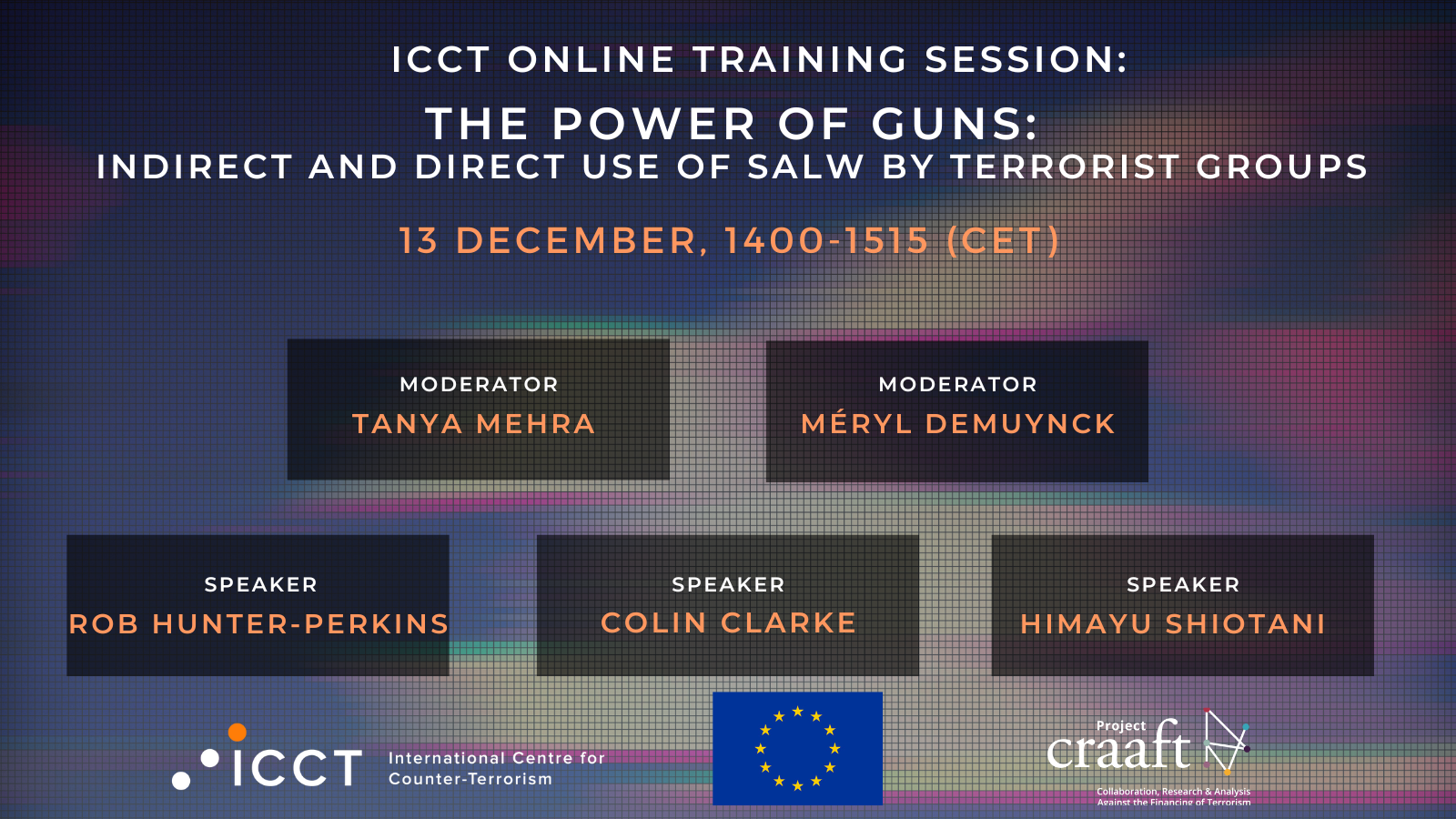
Within the framework of Project CRAAFT (Collaboration, Research, and Analysis Against the Financing of Terrorism), ICCT has conducted in-depth research on the nexus between small arms, light weapons (SALW), and terrorist finance in West Africa and the Middle East.
To ensure that research findings help inform future policies and programmatic activities, ICCT has organised an online training session on 13 December 2021 (14:00 - 15:15 CET). Experts discussed SALW possession, acquisition, and use by terrorist organisations, while also reflecting on potential short- and long-term consequences for Europe and steps that could help address this phenomenon.
This project was completed with funding by the European Union's Internal Security Fund - Police, under the call Ref. Ares(2019)6410895 - 16/10/2019 and under the Grant Agreement Number 878484 — CRAAFT — ISFP-2018-AG-CT/ISFP-2018-AG-CT-TERFIN.
Co-chaired by:
Tanya Mehra - Senior Research Fellow and Programme Lead at ICCT
Méryl Demuynck - Junior Research Fellow at ICCT
Speakers include:
Colin Clarke - Senior Research Fellow at The Soufan Center and Director of Policy and Research at The Soufan Group
Himayu Shiotani - Head of International Policy at the Conflict Armament Research
Rob Hunter-Perkins - Head of Research at Conflict Armament Research
Published in March 2021, the final report ‘Cashing in on Guns’ explores (1) the types of SALW that terrorist groups possess, (2) the acquisition of SALW by terrorist organisations, and (3) the direct and indirect use of SALW as a source of terrorist finance. It moreover explores the existing legal and policy frameworks and the suitability of disarmament, demobilisation and reintegration (DDR) programmes to reduce the flow of SALW and their acquisition by violent extremist groups. Considering the short- and long-term consequences for Europe, it finally provides a set of recommendations to identify, detect, prevent and address this linkage. For a concise overview of the research key findings, see the interactive infographic.







